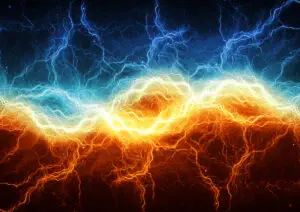 Cold fusion energy generation has been debated and controversial in the scientific community since its inception in the late 1980s. The idea of generating energy through a low-temperature nuclear reaction, which could potentially revolutionize the way we produce and consume energy, has faced numerous challenges and setbacks. However, recent advancements and potential breakthroughs in the field have rekindled interest in cold fusion, prompting researchers to revisit the concept and debunk some of its myths.
Cold fusion energy generation has been debated and controversial in the scientific community since its inception in the late 1980s. The idea of generating energy through a low-temperature nuclear reaction, which could potentially revolutionize the way we produce and consume energy, has faced numerous challenges and setbacks. However, recent advancements and potential breakthroughs in the field have rekindled interest in cold fusion, prompting researchers to revisit the concept and debunk some of its myths.
The term “cold fusion” was coined in 1989 when electrochemists Martin Fleischmann and Stanley Pons claimed to have observed nuclear fusion at room temperature. Their experiment involved passing an electric current through a palladium electrode submerged in heavy water, supposedly producing excess heat and other byproducts typically associated with nuclear reactions. However, their findings were met with skepticism, as other scientists struggled to replicate the results, leading many to dismiss cold fusion as a scientific anomaly or even a hoax.
One of the primary reasons for the skepticism surrounding cold fusion is the lack of a widely accepted theoretical framework to explain the phenomenon. Traditional nuclear fusion, which occurs in stars like our sun, involves merging atomic nuclei at extremely high temperatures and pressures, releasing vast amounts of energy in the process. On the other hand, cold fusion proposes that similar reactions can occur at or near room temperature, defying conventional understanding of nuclear physics.
Despite the controversy, a dedicated community of researchers has continued to investigate cold fusion, seeking to understand the underlying processes better and identify potential applications for this elusive form of energy generation. In recent years, several experimental results have suggested that cold fusion may indeed be possible, albeit under specific conditions and with varying degrees of success.
One such breakthrough came in 2019 when a team of researchers from Google and several academic institutions published a series of papers detailing their investigations into cold fusion. While they were unable to achieve the desired nuclear reactions, their work revealed new insights into the behaviour of hydrogen and palladium, the materials used in the original Fleischmann-Pons experiment. These findings have helped to refine experimental techniques and reignite interest in the field.
Another promising development in cold fusion research is the emergence of “lattice-assisted nuclear reactions” (LANRs), which involve the interaction of hydrogen with a metal lattice, such as palladium or nickel. Some researchers believe that LANRs could provide a more plausible explanation for the excess heat observed in cold fusion experiments, as they involve the absorption of hydrogen into the metal lattice, potentially creating the conditions necessary for nuclear reactions to occur.
Leave a Reply